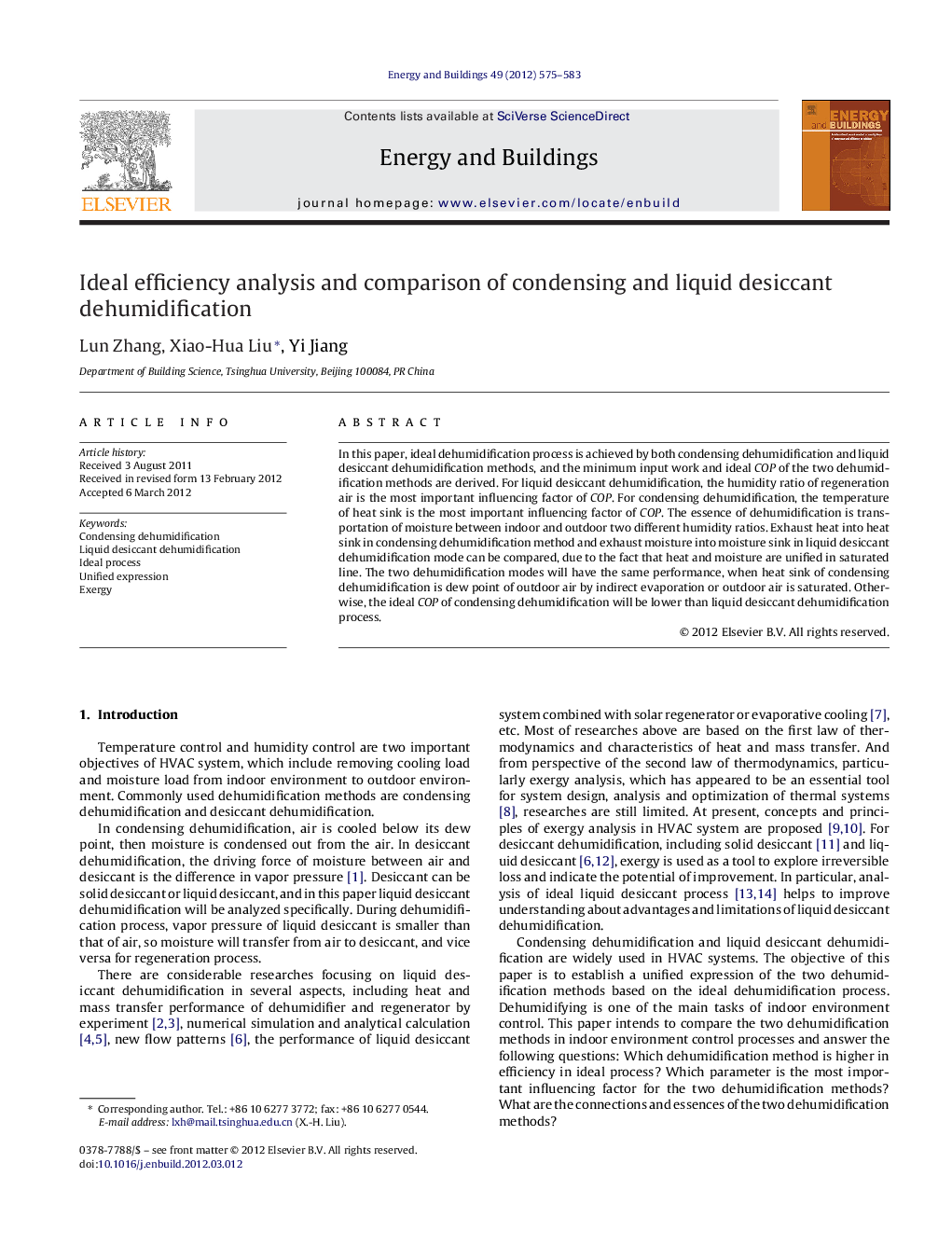| کد مقاله | کد نشریه | سال انتشار | مقاله انگلیسی | نسخه تمام متن |
|---|---|---|---|---|
| 263967 | 504086 | 2012 | 9 صفحه PDF | دانلود رایگان |

In this paper, ideal dehumidification process is achieved by both condensing dehumidification and liquid desiccant dehumidification methods, and the minimum input work and ideal COP of the two dehumidification methods are derived. For liquid desiccant dehumidification, the humidity ratio of regeneration air is the most important influencing factor of COP. For condensing dehumidification, the temperature of heat sink is the most important influencing factor of COP. The essence of dehumidification is transportation of moisture between indoor and outdoor two different humidity ratios. Exhaust heat into heat sink in condensing dehumidification method and exhaust moisture into moisture sink in liquid desiccant dehumidification mode can be compared, due to the fact that heat and moisture are unified in saturated line. The two dehumidification modes will have the same performance, when heat sink of condensing dehumidification is dew point of outdoor air by indirect evaporation or outdoor air is saturated. Otherwise, the ideal COP of condensing dehumidification will be lower than liquid desiccant dehumidification process.
► Ideal dehumidification process is gained by both condensing and desiccant methods.
► Unified expression of ideal COP of the two dehumidification methods is derived.
► The ideal COP of condensing method will be lower than or equal to desiccant method.
► Main performance factor of desiccant method is humidity ratio of regeneration air.
► Main performance influencing factor of condensing mode is temperature of heat sink.
Journal: Energy and Buildings - Volume 49, June 2012, Pages 575–583